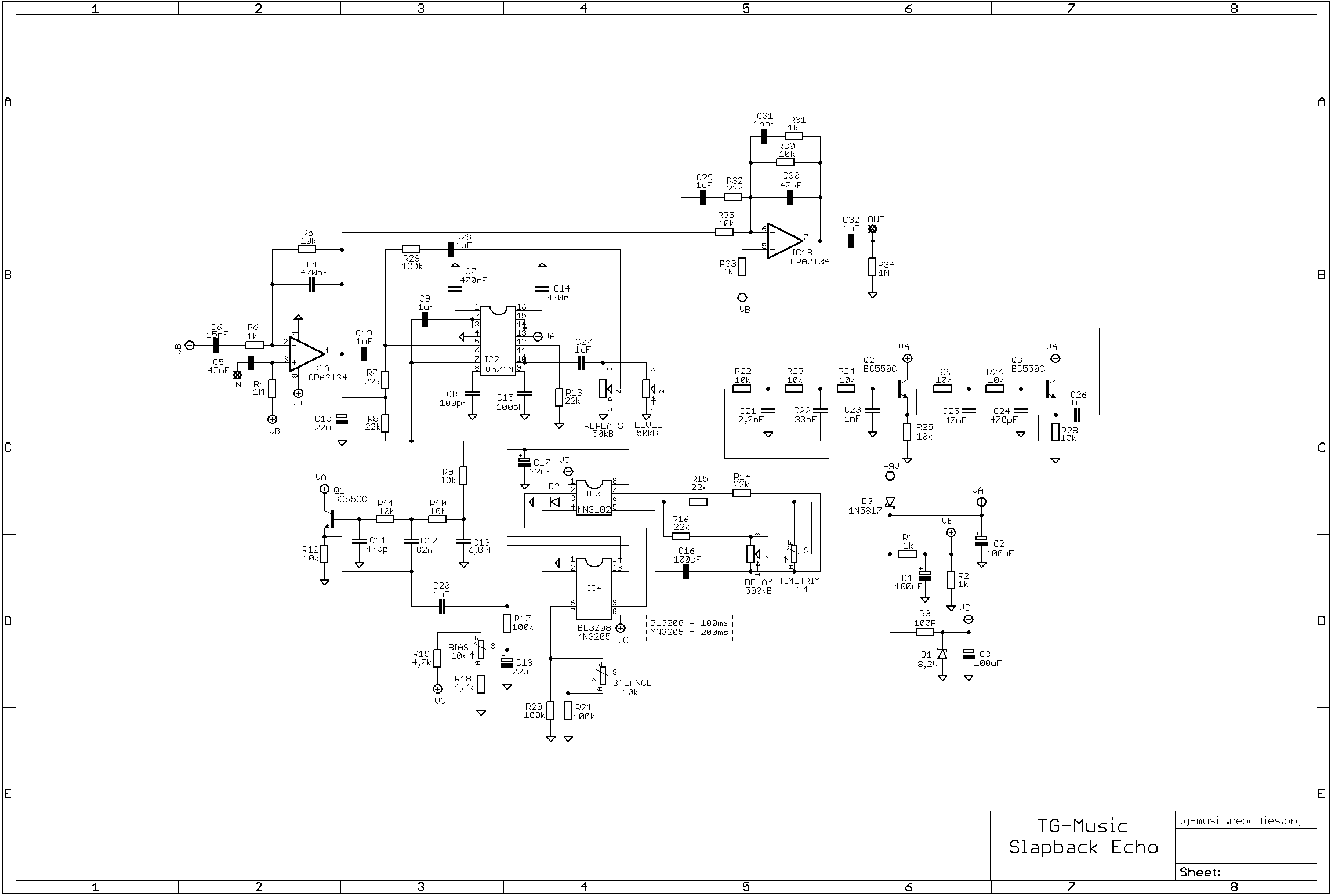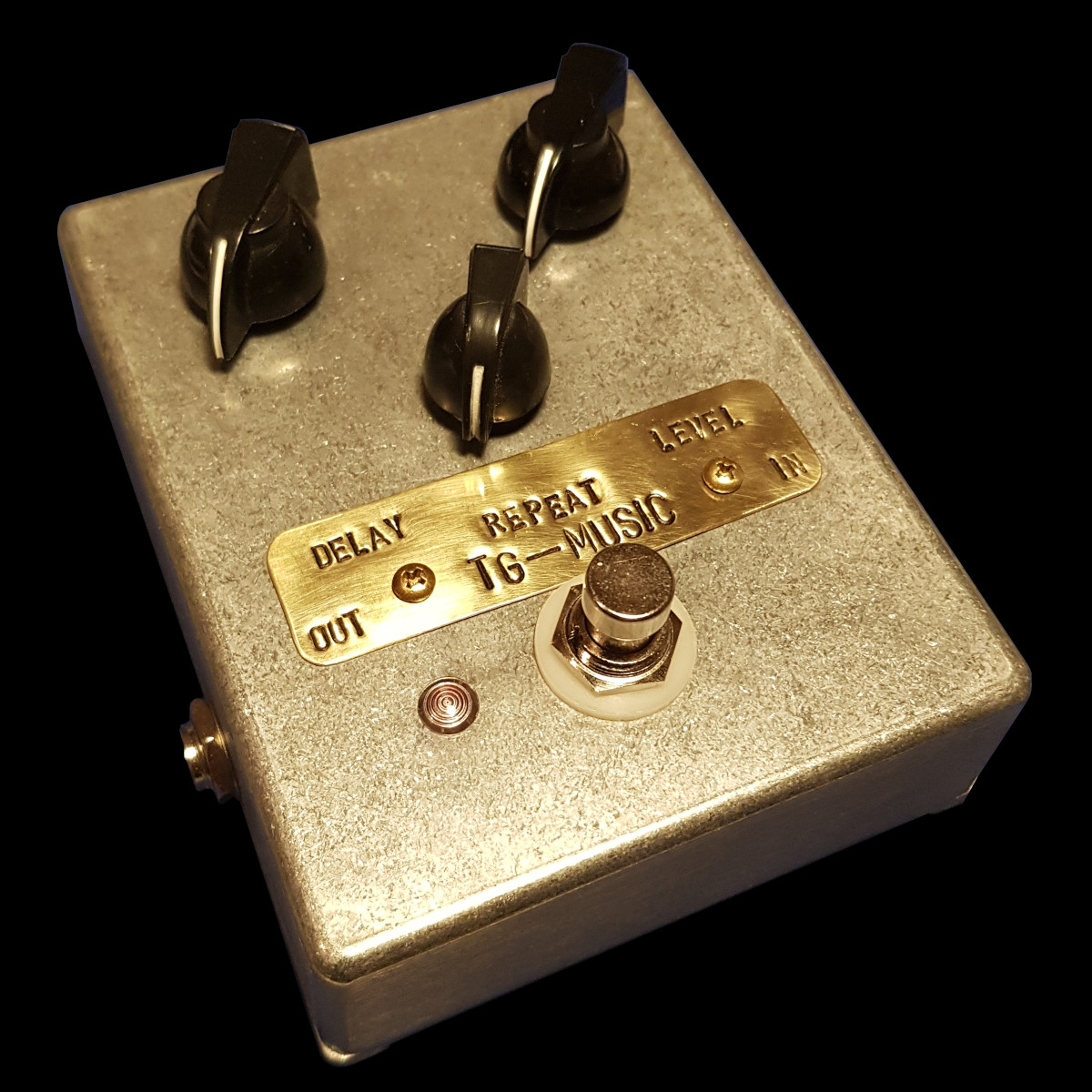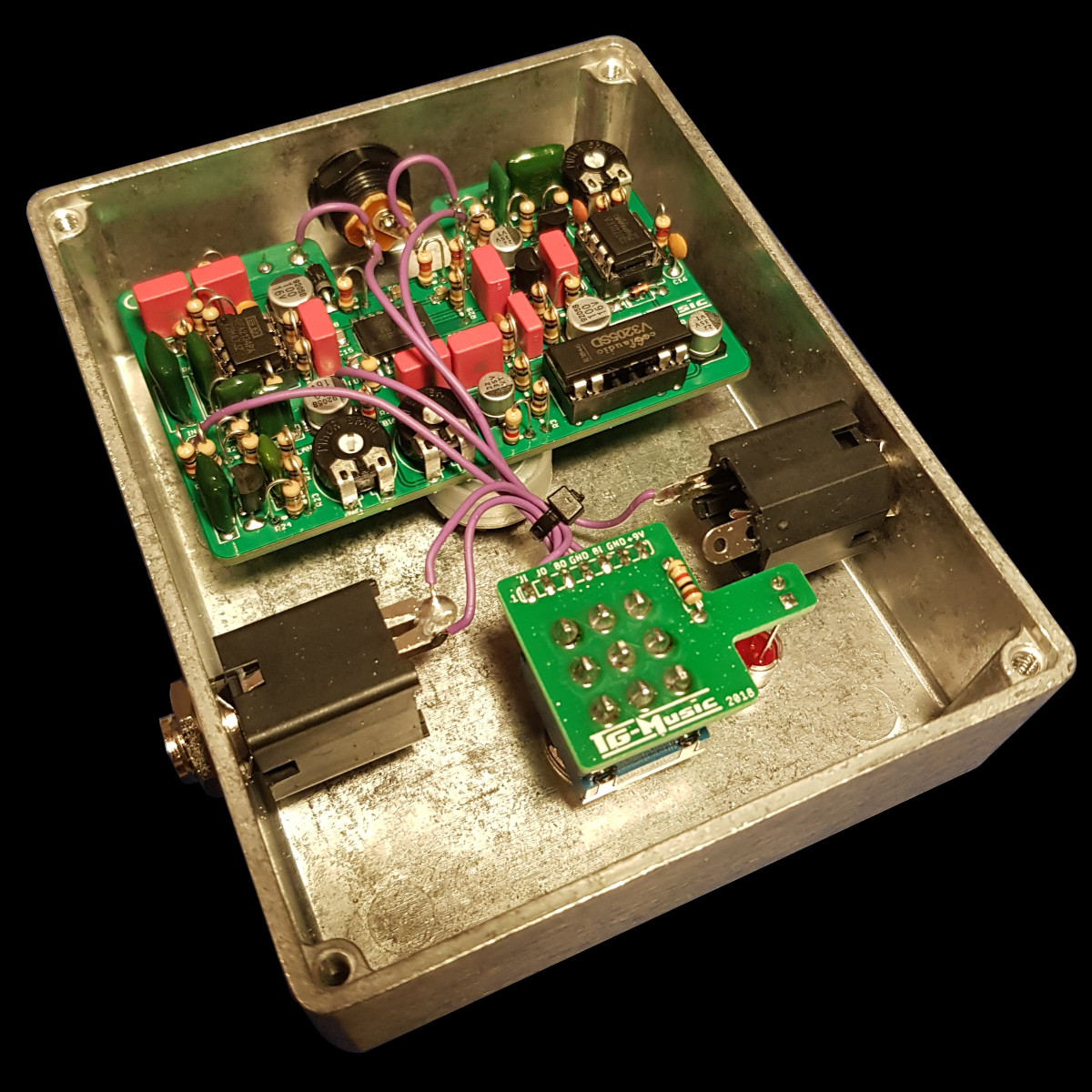TG-Music Analog Slapback Echo and Delay
Here it is. Finally, a traditional and time tested (see what I did there?) BBD analog delay for the authentic warm tones. TG-Music Slap back Echo has a 100ms maximum delay time for those authentic 50s rock n' roll and rockabilly sounds. And TG-Music Analog Delay has a 200ms maximum delay time for the more versatile uses.
These (or this?) pedal is based on Scott Swartz old AD-3208 delay from 2003. I build one way back then, and then years just went by and everything else was way more interesting. Those were the wild and crazy times in boutique pedal industry and DIY circles as well. Good days, I still sometimes go and read some old freestompboxes (the forbidden forum) threads.
Only difference between these pedals is the BBD (Bucket Brigade Delay) chip in them. Slap back Echo uses a one BL3208 and Analog Delay has one NM3205 in it. These give me the delay times I use most of the time. I don't need longer delay times. But two MN3205 would give a 400ms delay and that would fill even most modern needs.
And talking about modern... these are not. No tap tempo or precise "down to millisecond" controls. I treat and use these delays as I would use a real-life corridor. 100ms is about 35 meters and 200ms is about 70 meters. I can make these "corridors" smaller, but 75 meters is long enough!
How to setup analog delay pedal?
Disclaimer: When setting up your pedal with trimmers, always refer to service manual or datasheets. These are general instructions and guidelines to demonstrate the process. You can do this "tuning" by ear if you feel like it. In reality you need an oscilloscope and signal generator. Here is a video for people who like videos.
Setup maximum delay time:
In this example V3205 has maximum delay time of 204,8ms. This can be achieved with 10kHz clock signal. And like all BBD devices, lower clock frequency = longer delay time. Also with all BBD delays there is a trade-off between delay length and sound quality. For example Boss DM-2 uses 6,8kHz to get 300ms from MN3005. Experiment.
Adjust for minimum distortion:
This is very important step. Feed 200Hz 1 Vrms (about 2,85 Vpp) sine wave test signal to pedal input. Output is often measured after the expander, usually on input side of level or repeats (or echo or intensity etc.) potentiometer. Observe the wave shape on oscilloscope and adjust bias trimmer for clean sine wave output. This is very sensitive adjustment. If you do this by ear, you will get distortion. Audible or not.
Setting up BBD balance:
With no input signal, observe the waveforms on balance trimmer wiper. Converge these two signals as best as you can. This signal is often a bit noisy and messy. It's mostly white noise with clock signal "whining", and we are tuning out the whining.
That's it! 😊



